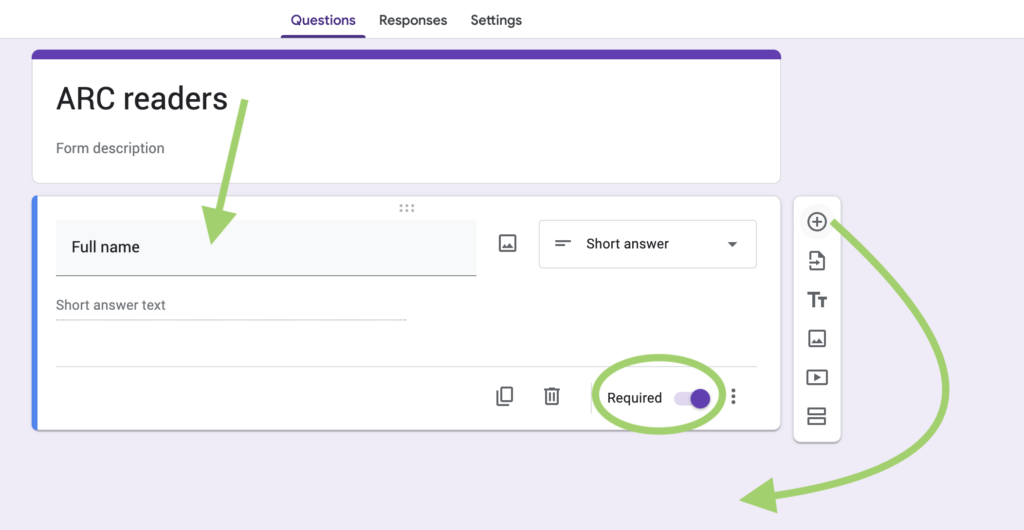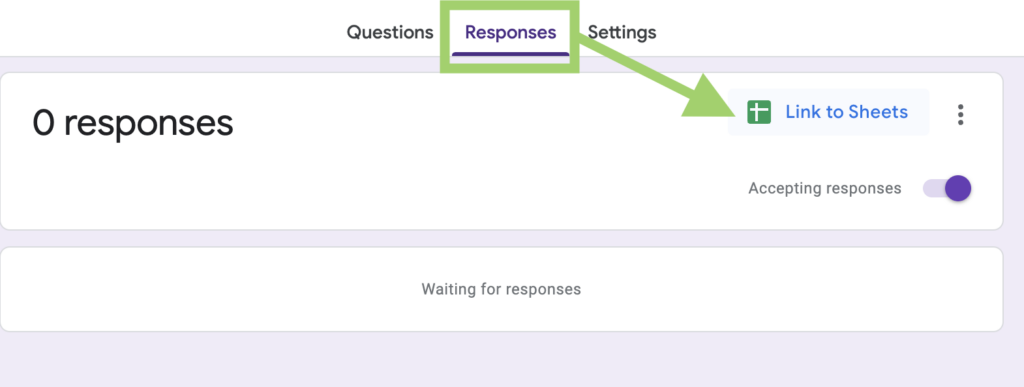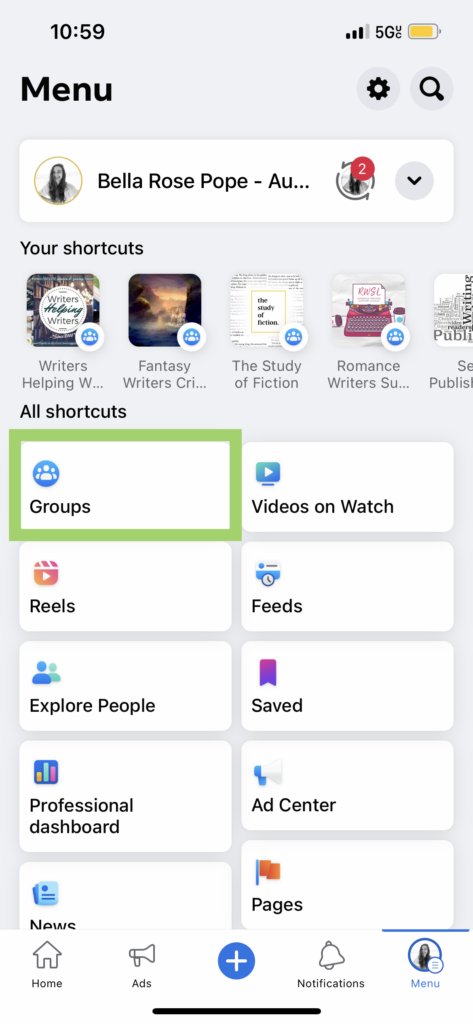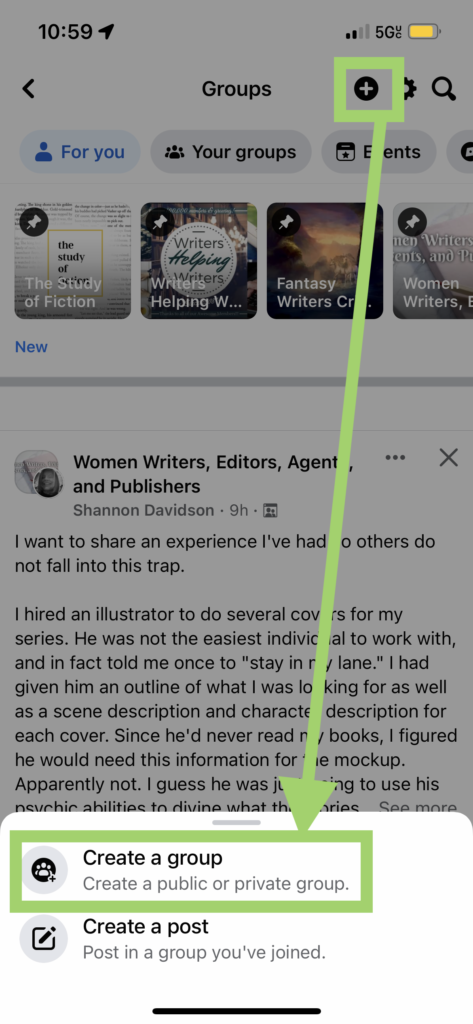There’s nothing worse than spending hours upon hours and even years writing a book only for it to be lost in the online void that is the internet. With thousands of new books being published every year, it can be easy for your book to go unnoticed.
We hope that it doesn’t, but this is the case for new authors everywhere. Thankfully, there is hope!
One of the best ways you can generate enough attention for your book to stand out online is with something called an book ARC teams.
What is an ARC team?
An ARC (advanced reader copy) team is a group of people who have shown interest in your book that you can send a physical copy to before your book’s launch for the purpose of early reading and reviews. They’re an exclusive team who get to read the real book before it’s available to the public.
In order for your book launch to go well, you’ll need to drum up extra attention toward it online. That’s where your ARC team and book launch team come in.
—What’s the difference between ARC Teams, Launch Teams, and Street Teams?
Launch teams and street teams are the same thing and are technically different (but similar) to your ARC team. While your launch team members are people who have actively agreed to support your launch with positive reviews, sharing your book link, and posting about it online after receiving an ebook or PDF copy to review, your ARC team is composed of avid readers of your book’s genre to leave genuine ratings and reviews of what they thought of the physical copy of the book you sent.
You can think of it this way:
LAUNCH TEAM = agree to support and share no matter their personal opinion of your book, ebook/PDF copy
ARC TEAM = agree to give honest thoughts as a common reader of your genre, real physical copy of the book
The point of the ARC team is to establish how you fit into the book genre you’re writing in from people who would most likely read and share about your book anyway. But don’t get us wrong—your launch team should be made up of people who like and read your book.
—How many ARC team readers should you have?
There is not hard-fast rule when it comes to how many members you should have on your ARC team, but aim for more than 20 since not all of them will leave a review.
Between this number and how many are on your book launch team, you should have enough to make enough of an impact with your reviews to trigger the algorithms.
How ARC Teams Benefit Book Launches
One of the hardest things to do as a new author is get the word out about your book. One of the best ways to do that?
Book reviews.
Not only do book reviews trigger all algorithms where your book is listed to boost its place in listings, but it also helps persuade any of those viewers to click that all-important “buy” button. Book reviews are trustworthy.
Here are other ways building an ARC team helps you as an author:
- If they love your book, you can invite them to be an ARC member for any future books
- They might post about the book online themselves if they liked it
- Book momentum from reviews being left at various times
- You might have new raving fans who never heard of you as an author before this launch
- You won’t have to go through the process alone
How to Put Together an ARC Team
While not super complicated, ARC teams do need some preparation, organization, and management. If your goal is to become a full-time author and publish many books that earn you an income, then learning this process is the best way to ensure success.
1. Gather your ARC team members
This is by far the hardest step, especially as a debut author or if you’re starting from scratch with a pen name. Drumming up interest to become an ARC reader takes a bit of time, so starting early is best.
Places you can find ARC team members:
- Facebook groups of readers and writers
- make sure to read the group rules to ensure this is allowed
- search “fantasy reader” (or your genre) in the Facebook search bar and then choose “groups” from the filter options
- choose groups with a lot of members and at least 5 new posts a day (indicated on the search results)
- Netgalley
- Friends and family
- ARC companies and services
Tactics to increase the likelihood of getting ARC team members:
- Be an active part of reader and writer groups long before your book is even done (if you can, if you’re already done, start now)
- Join other authors’ ARC teams, be a beta reader, or join their launch team to generate good will and learn how others do it
- Make sure you have a strong cover and use it when asking for ARC members
- Find a way to summarize your book in a single sentence so other can quickly know what it’s about. Most members in groups will not read your entire book blurb, but they will notice the cover and a short, attention-grabbing sentence
2. Keep their information in order
It would be a nightmare to go through all the hard work of building your ARC team only to lose their information or a way to contact them. For that reason, you’ll want a way to collect their information and store it somewhere you can easily access it later.
A free way to do this is to create a Google form and turn the data into a spreadsheet. It minimizes your work while automatically retaining all the data.
Here’s how you can do that:
Step 1: Log in to your Google account and select “Forms” from the options

Step 2: Click “Blank” beneath the “start from scratch” section at the top
Step 3: Title your form and create the questions
*Make sure to toggle “required” so it’s on for every question. This ensures every person needs to fill out the questions before they can submit the form

Step 4: To share the form, go to the “SEND” button at the top right
Step 5: Create the spreadsheet by going to “Responses” and choosing “link to sheets” and then “create”.

From there, you can add an additional column to the right side of the sheet for things like “notes”, “updates”, a checkbox for whether or not they left a review yet, or any other information you want to add. Your form will look like this and entries will automatically populate into the sheet when submitted:

3. Create a space to communicate
Sending email updates is definitely an option, but it requires more work and your ARC team is less likely to read them. One of the best ways is to use a Facebook group and require all members join it.
Most people have a Facebook account and if they don’t, they can make one easily for the ARC team. If you get resistance from a couple people, just make note of them not being in the group on your spreadsheet and communicate with them directly.
Creating a Facebook group is pretty simple.
Step 1: Open the app on the computer or your phone (we’ll be using an iPhone in the images below, but the process is similar for all).

Step 2: Click the + sign at the top of the screen and then “Create a Group”

From there, you’ll follow the steps prompted through Facebook. When it’s complete, go to your group’s homepage and copy the link in your browser. This will be what you send ARC team members so they can join your group.
If they’re friends or family, you will be able to invite them to join the group through a prompt when making the group.
Here are a few other methods for creating a place to communicate that are not on Facebook:
- Whatsapp group
- Through email (not recommended)
- Text group
- Discord channel
- Slack channel
4. Send the physical copies
Now is the time!
Not all ARC teams or authors utilize physical copies, but if you want to make the experience more special to your team members, getting proof copies (which will come with a banner across the design, labeled as such) will go a long way.
You should be able to go into your account and order as many proof copies as you want. These will have a “not for resale” banner across the cover and they will not have an ISBN. If you want to send copies without the banner, you can’t until your book is listed live. Only then can you order author copies with all the details.
If you don’t want to send physical book copies to your ARC team, you can send digital files.
Here are the options for sending digital book files:
- PDFs—most common
- can be emailed as an attachment to the email
- can be uploaded to your Google drive and shared as a link with “view only” access: this option is great for posting the link inside your group so you don’t need to manually email everyone
- You can do both to be on the safe side!
- epub file
- send directly to their kindles (they have to send you their kindle email address (it is different than their Amazon account email address!) and the file type has to be epub in order to read properly on their device)
- Google doc with “view only” access
5. Create shareable images and content
This step is often overlooked but one of the most important for both your ARC and launch teams. If you really want people to share about your book, the best thing you can do is make it as easy as possible for them!
Create 6-10 different images with your book, quotes you think readers will love, and imagery of your book and send all of them to each ARC team member. Not only will this get your team excited about what they’re about to read, but it’ll also give them material to share while they’re reading and after, when you ask them to share about it.
They’ll also be useful for keeping members engaged.
6. Generate engagement leading up to the release
You don’t want your team to go quiet. Recruiting team members should happen at least a month before release. The reason for this is so they have enough time to read and review the book. Some avid readers will read it in a few days, but others may need a couple weeks with frequent reminders.
For this reason, you want to keep them excited, even if they’re the type who read it immediately. This way, you avoid the reality of some readers forgetting about your book altogether and therefore, not reviewing it, which is also why we recommend using a Facebook group (or Discord or Slack) to give everyone a space to interact.
Here are some posts to create inside your ARC group:
- Initial post with expectations and guidelines (go to “options” on the post and click the one that says “pin to featured” so it remains at the top of the group)
- Some of the graphics you’ve created to be shared
- Flashbacks about your process of writing the book & why it means so much that people are finally reading it
- Reminders to read and review, with links to the book and to review pages
- Any pictures or videos people have sent you directly of them reading the book
- Any comments or texts of readers’ reactions that they sent you directly
- Encourage members to post their own thoughts and reactions (without spoilers) to the group
- Memes or gifs about the ARC reading process
- Questions or polls about which character people are loving most
You don’t have to post every day, but if someone else creates a post or comments on yours, always reply to them in order to keep the group active.
7. Restate expectations
As you go through the engagement process, you’ll want to remind people what they committed to in a way that’s not begrudging if some aren’t leaving reviews. Take the grateful approach, with posts or updates like “Thanks so much for reading and reviewing! Remember we only have 7 days before launch and it can take a few days for reviews to be approved, so gets yours in ASAP.”
Some people just need a short reminder of the timeline and expectations to trigger movement.
8. Set your book “live” early
This is the key to allowing book reviews to come in early. You won’t promote your book anywhere just yet, but you can set your book to “live” on Amazon prior to your official launch date. A good trick is to keep the price very low, even $.99 for ebook copies so your launch team can purchase them at a special discount.
This is also when your team will leave their reviews for your book. Having multiple reviews already live before you share the link for your book online will increase the likelihood that browsers will buy.
9. Remember to have fun and celebrate!
Having your ARC team members read your book can be a little scary. Launching a book in general can be stressful. So remember to look back on how far you’ve come and everything that’s brought you to this point. Celebrate what a meaningful milestone this is!
Tips & Best Practices for Running Your ARC Team
- Establish expectations immediately: The best thing you can do for your book is make sure your team knows what’s expected of them. If you do choose to use a Facebook group, write the expectations in the group description as well as updating the group rules to reflect them. Then, make a video or longer post and pin it to the top of the group so it’s never forgotten.
- Prepare yourself for less than 5-star reviews: the point of an ARC team is to get reviews, yes, but not every single one will be 5-stars. This is actually a good thing. Readers browsing new books to read won’t trust a book with 40 reviews and all of them are 5-stars. In fact, getting a couple 3-stars while having an average rating of above 4 stars will help you more than receiving 100% 5-star ratings.
- Remember that not everyone will leave a review: This is just the reality of life. Very few endeavors have a 100% conversion rate. You’ll get some people who won’t review and it could be for a few reasons. They could either not have time to read the whole book in the timeline, they could not enjoy it as much as they thought and don’t want to leave you a low rating, or they could have just forgot. All these are okay, which is why you should always shoot to have 25% more people on your ARC team than your goal for number of reviews.
- Give the opportunity for readers to ask questions: Make sure they know it’s okay to interact with you and ask questions. Create a post or update that prompts them to send any and all questions they have for the book, world, or to clarify expectations.
- Celebrate your team! Yes, you’re giving a book away for free, but those readers are also doing you a solid by reading and reviewing (if they review). If nothing else, they raised their hand to be a part of your book’s launch, and that’s something to be grateful for. Make sure they know this with messages and posts in your communication choice.
- Don’t pay for reviews: on almost all websites where you can list your book, paying for book reviews is against the terms of service and can not only get your book removed, but it can also get your entire author account permanently deleted.
- Remember that, on Amazon, anyone who wants to leave a book review has to have spent $50 or more in the last year in order to review anything. Remind your ARC members of this in case they try to leave a review and it’s denied.
- Remember that Amazon might not publish reviews from family members: if one of your team members has your address on their Amazon account, their review might not be published. This is Amazon’s attempt to prevent biased reviews and maintain integrity in their reviewing system. It can be frustrating, but ultimately, it’s for a good cause.
Congratulations on your upcoming book launch! Don’t let this list for building your ARC team overwhelm you. Take it one step at a time and everything will happen as it should.
























